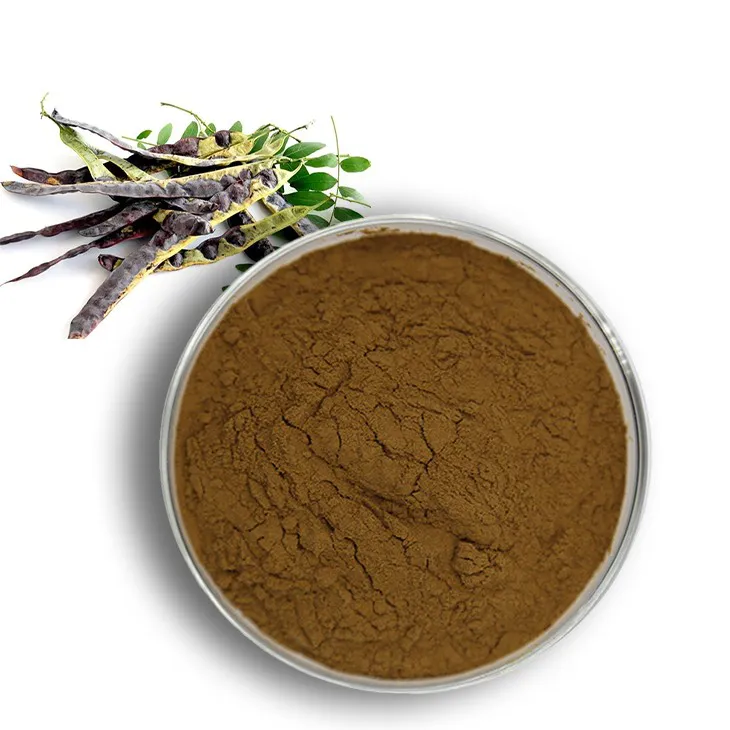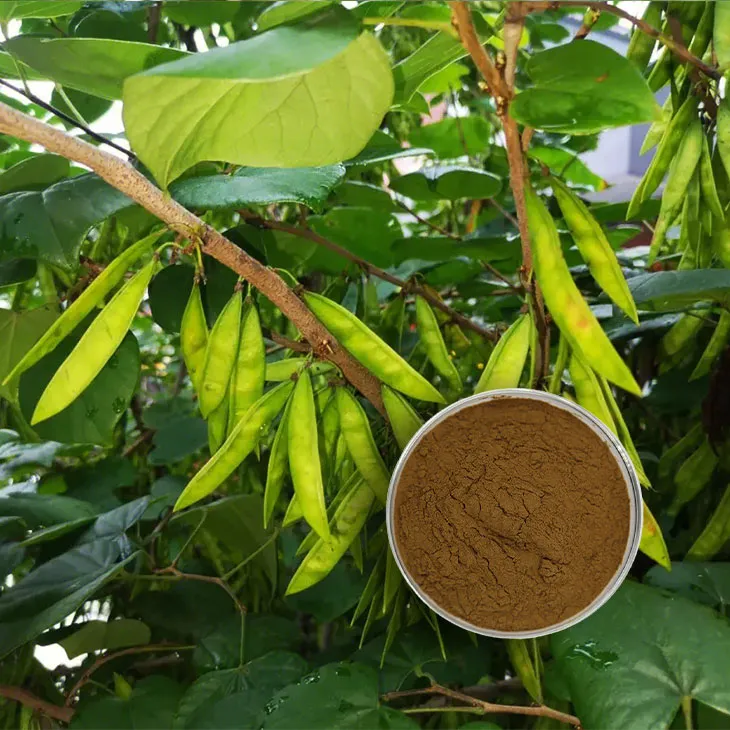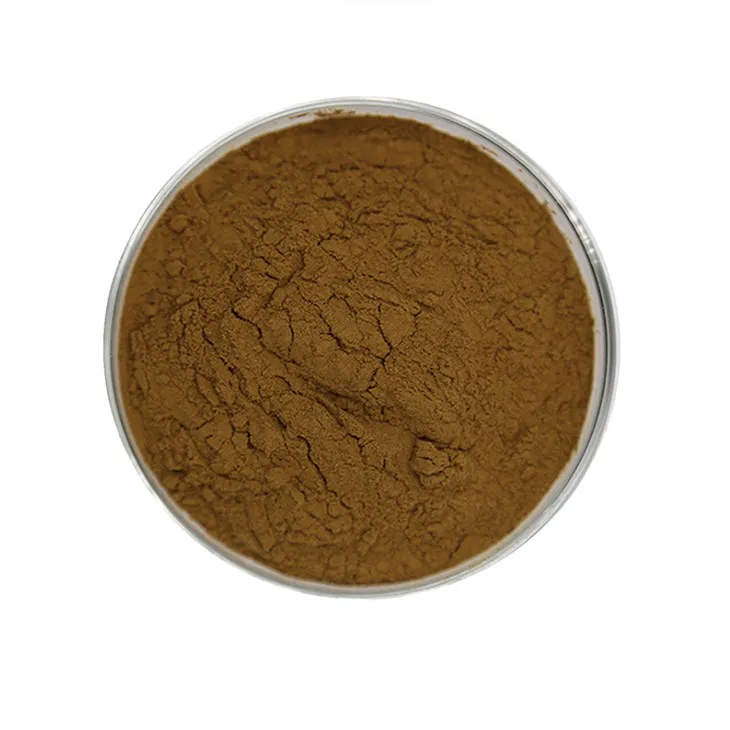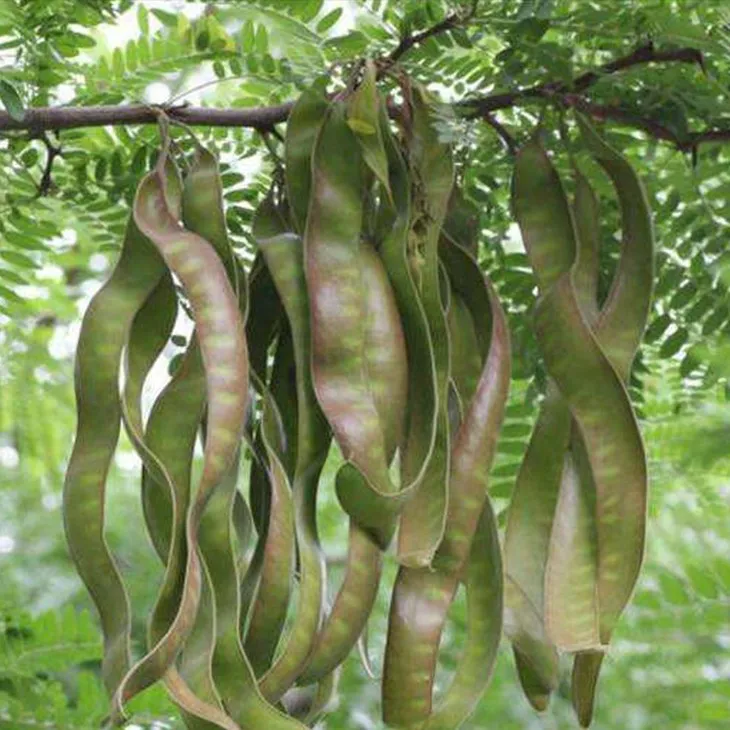- 0086-571-85302990
- sales@greenskybio.com
The process of extracting saponins with specific structures from saponin extracts.
2024-11-26

1. Introduction
Saponins are a diverse group of natural compounds that are widely distributed in plants. They possess a variety of biological activities, such as anti - inflammatory, antioxidant, and anticancer properties. Saponins with specific structures often exhibit unique and enhanced biological functions compared to general saponins. Therefore, the extraction of these specific - structure saponins from Saponin Extracts has become an important area of research. This process not only helps in the discovery of new bioactive substances but also has potential applications in the pharmaceutical, cosmetic, and food industries.

2. Significance of Extracting Specific - Structure Saponins
2.1 Enhanced Biological Activity
Specific - structure saponins may have stronger pharmacological effects. For example, some triterpenoid saponins with unique ring structures have been shown to have more potent anti - tumor activity than other saponins. This enhanced activity can be attributed to their specific molecular conformations, which allow for better interactions with biological targets such as receptors or enzymes.
2.2 Targeted Therapeutic ApplicationsThese saponins can be developed for targeted drug delivery. Their specific structures can be modified or utilized to target specific cells or tissues in the body. For instance, saponins with particular sugar moieties may be preferentially taken up by certain cancer cells, enabling more effective treatment with reduced side effects on normal tissues.
2.3 Industrial ApplicationsIn the cosmetic industry, specific - structure saponins may have better skin - penetrating abilities or antioxidant properties, which are highly desirable for anti - aging and skin - protecting products. In the food industry, they can be used as natural additives with specific functions, such as emulsifiers or stabilizers, due to their unique physical and chemical properties.

3. Traditional Extraction Methods
3.1 Solvent Extraction
3.1.1 Organic Solvents
Organic solvents such as ethanol, methanol, and chloroform are commonly used for Saponin Extraction. Ethanol is a popular choice because it is relatively safe, has a good solubility for saponins, and is miscible with water. The process involves soaking the plant material containing Saponin Extracts in the solvent for a certain period of time, usually several hours to days. For example, in the extraction of ginseng saponins, the dried ginseng roots are often soaked in 70% ethanol for 2 - 3 days at room temperature. The solvent is then evaporated under reduced pressure to obtain the saponin - rich extract.
3.1.2 Aqueous Solvents
Water can also be used as a solvent for saponin extraction, especially for water - soluble saponins. However, the extraction efficiency may be lower compared to organic solvents in some cases. The extraction process with aqueous solvents usually requires higher temperatures and longer extraction times. For instance, when extracting saponins from certain legume plants, boiling water extraction for several hours may be necessary.
3.2 Soxhlet ExtractionThe Soxhlet extraction method is a continuous extraction process. The plant material is placed in a Soxhlet extractor, and the solvent is continuously refluxed through the sample. This method is highly efficient for extracting saponins as it allows for multiple extractions with a relatively small amount of solvent. However, it is time - consuming, often taking several hours to days depending on the nature of the sample. Additionally, the Soxhlet extraction may lead to the extraction of unwanted impurities along with the saponins.

4. Modern Extraction Techniques
4.1 Supercritical Fluid Extraction (SFE)
Supercritical carbon dioxide (CO₂) is commonly used in SFE for saponin extraction. The supercritical state of CO₂ has properties between those of a gas and a liquid, which gives it excellent solvent properties. It can selectively extract saponins based on their solubility in the supercritical fluid. The advantages of SFE include high extraction efficiency, short extraction time, and the ability to obtain a relatively pure extract. Moreover, since CO₂ is a non - toxic, non - flammable gas, the extract obtained is free from solvent residues, making it suitable for applications in the food and pharmaceutical industries. For example, in the extraction of saponins from hops, SFE with supercritical CO₂ has been shown to produce high - quality extracts with good antioxidant properties.
4.2 Microwave - Assisted Extraction (MAE)MAE utilizes microwave energy to heat the solvent and the plant material rapidly. This causes the cell walls of the plant material to rupture more easily, increasing the release of saponins into the solvent. The extraction time in MAE is significantly shorter compared to traditional methods, usually ranging from a few minutes to half an hour. For example, in the extraction of saponins from aloe vera, MAE can extract a significant amount of saponins in just 10 - 15 minutes, while traditional solvent extraction may take several hours. However, the optimization of extraction parameters such as microwave power and extraction time is crucial to ensure high extraction efficiency and avoid the degradation of saponins.
4.3 Ultrasonic - Assisted Extraction (UAE)UAE uses ultrasonic waves to create cavitation bubbles in the solvent. When these bubbles collapse, they generate high - pressure and high - temperature micro - environments that can disrupt the cell walls of the plant material and enhance the mass transfer of saponins into the solvent. UAE is a relatively simple and cost - effective method. It can be used in combination with other extraction methods to improve the overall extraction efficiency. For instance, in the extraction of saponins from fenugreek seeds, combining UAE with solvent extraction can increase the yield of saponins compared to using solvent extraction alone.

5. Factors Influencing Extraction Efficiency
5.1 Raw Material Characteristics
- The species of the plant is a crucial factor. Different plants contain different types and amounts of saponins. For example, ginseng is rich in triterpenoid saponins, while soapwort contains steroidal saponins.
- The part of the plant used also affects extraction efficiency. Saponins may be more concentrated in certain parts such as the roots, leaves, or seeds. For instance, in the case of quinoa, the saponins are mainly present in the outer layer of the seeds.
- The age and growth conditions of the plant can influence the saponin content. Older plants or those grown in specific environmental conditions may have higher or lower saponin levels.
- Temperature plays an important role. Higher temperatures generally increase the solubility of saponins in the solvent, but excessive heat may lead to the degradation of saponins. For example, in solvent extraction, the optimal temperature for extracting certain saponins may be around 50 - 60°C.
- The ratio of solvent to raw material affects the extraction efficiency. A higher solvent - to - raw - material ratio may increase the extraction yield, but it also increases the cost and the amount of solvent to be removed later. For example, in ethanol extraction of saponins, a solvent - to - raw - material ratio of 10:1 may be suitable in some cases.
- Extraction time is another critical factor. Longer extraction times may increase the yield of saponins, but it may also lead to the extraction of more impurities. The optimal extraction time needs to be determined based on the specific extraction method and raw material.
6. Purification and Identification Steps
6.1 Purification
6.1.1 Column Chromatography
Column chromatography is a widely used method for purifying saponins. Different types of columns, such as silica gel columns or reversed - phase columns, can be used depending on the nature of the saponins. The saponin - rich extract is loaded onto the column, and different solvents or solvent mixtures are used as eluents to separate the saponins based on their polarity or other chemical properties. For example, in the purification of triterpenoid saponins from plant extracts, a silica gel column with a gradient elution of chloroform - methanol mixtures can be used to obtain relatively pure saponin fractions.
6.1.2 Preparative High - Performance Liquid Chromatography (HPLC)
Preparative HPLC is a more advanced purification technique. It can separate saponins with high resolution based on their different chemical structures. The sample is injected into the HPLC system, and specific mobile phases are used to elute the saponins at different times. This method can obtain highly pure saponin samples, but it is relatively expensive and requires specialized equipment.
6.2 Identification
6.2.1 Spectroscopic Methods
- Ultraviolet - visible (UV - Vis) spectroscopy can be used to detect the presence of saponins based on their characteristic absorption spectra. Saponins usually show absorption in the UV region, which can provide initial information about their structures.
- Infrared (IR) spectroscopy is useful for identifying the functional groups present in saponins. Different types of saponins may have distinct IR spectra due to the presence of different functional groups such as hydroxyl groups, carbonyl groups, etc.
- Nuclear Magnetic Resonance (NMR) spectroscopy is one of the most powerful tools for determining the detailed chemical structures of saponins. Both ¹H - NMR and ¹³C - NMR spectra can provide information about the number and types of atoms in the saponin molecule, as well as their connectivity.
6.2.2 Mass Spectrometry (MS)
Mass spectrometry can determine the molecular weight and fragmentation patterns of saponins. By analyzing the mass - to - charge ratio of the ions generated from the saponins, information about their molecular formulas and possible structural features can be obtained. Combined with other spectroscopic methods, MS can provide comprehensive identification of saponins with specific structures.
7. Conclusion
The extraction of saponins with specific structures from saponin extracts is a complex but important process. Understanding the significance of these saponins, choosing appropriate extraction methods, considering the factors influencing extraction efficiency, and implementing proper purification and identification steps are all crucial for obtaining high - quality specific - structure saponin products. With the continuous development of extraction and purification technologies, it is expected that more efficient and environmentally friendly methods will be developed for the extraction of these valuable saponins in the future.
FAQ:
1. What is the significance of extracting saponins with specific structures from saponin extracts?
Extracting saponins with specific structures from saponin extracts is of great significance. These specific - structure saponins often possess unique biological activities, such as antioxidant, anti - inflammatory, and anticancer properties. They can be used in the development of new drugs, functional foods, and cosmetics. Moreover, understanding their extraction can contribute to a deeper study of the chemical composition and pharmacological effects of saponin - containing plants.
2. What are the traditional extraction methods for saponins with specific structures?
Traditional extraction methods for saponins with specific structures mainly include solvent extraction. For example, using organic solvents like ethanol or methanol to extract saponins from plant materials. Maceration and Soxhlet extraction are common techniques within this method. Maceration involves soaking the plant material in the solvent for a certain period, while Soxhlet extraction is a continuous extraction process that can achieve more complete extraction. However, these traditional methods may have some drawbacks, such as long extraction time and relatively low selectivity.
3. What modern extraction techniques can be used for specific - structure saponin extraction?
Modern extraction techniques for specific - structure saponin extraction include supercritical fluid extraction (SFE), microwave - assisted extraction (MAE), and ultrasonic - assisted extraction (UAE). SFE, usually using supercritical CO₂, has the advantages of high selectivity, short extraction time, and environmental friendliness. MAE uses microwave energy to accelerate the extraction process, which can increase the extraction efficiency significantly. UAE utilizes ultrasonic waves to disrupt the cell walls of plant materials, facilitating the release of saponins. These modern techniques often offer better extraction efficiency and selectivity compared to traditional methods.
4. How do raw material characteristics affect the extraction efficiency of specific - structure saponins?
Raw material characteristics play a crucial role in the extraction efficiency of specific - structure saponins. The species of the plant source determines the type and content of saponins present. Different plant species may have different saponin compositions and structures. The age and growth environment of the plant also matter. For example, older plants may have different saponin contents compared to younger ones. Additionally, the part of the plant used, such as roots, stems, or leaves, can vary in saponin content and type, which directly affects the extraction efficiency.
5. What are the important extraction conditions for specific - structure saponin extraction?
The important extraction conditions for specific - structure saponin extraction include factors such as solvent type, extraction time, extraction temperature, and solvent - to - material ratio. The choice of solvent depends on the solubility properties of the saponins. The extraction time should be optimized to ensure sufficient extraction without causing degradation of the saponins. The extraction temperature can affect the solubility and stability of saponins. A proper solvent - to - material ratio is also necessary to achieve high - efficiency extraction. For example, in solvent extraction, a higher solvent - to - material ratio may initially lead to higher extraction yields, but there may be a saturation point beyond which further increase in the ratio does not significantly improve the yield.
6. What are the purification steps after extracting specific - structure saponins?
After extraction, purification steps for specific - structure saponins often involve techniques such as column chromatography, preparative high - performance liquid chromatography (HPLC), and crystallization. Column chromatography can separate saponins based on their different affinities for the stationary and mobile phases. Preparative HPLC is a more advanced technique that can achieve high - purity separation of saponins. Crystallization can be used to obtain pure saponin crystals from the purified extracts. These purification steps are essential to obtain highly pure specific - structure saponins for further study and application.
7. How are specific - structure saponins identified after extraction?
After extraction, specific - structure saponins can be identified through various methods. Spectroscopic techniques such as nuclear magnetic resonance (NMR) spectroscopy and mass spectrometry (MS) are commonly used. NMR can provide detailed information about the chemical structure of saponins, including the connectivity of atoms and the configuration of functional groups. MS can determine the molecular weight and fragmentation pattern of saponins, which helps in deducing their chemical structures. Additionally, infrared spectroscopy (IR) can also be used to identify the functional groups present in saponins.
Related literature
- Extraction and Characterization of Saponins: A Review"
- "Advanced Techniques for the Isolation of Specific - Structure Saponins"
- "The Role of Raw Material Quality in Saponin Extraction"
- "Purification and Identification of Bioactive Saponins: Current Trends"
- ▶ Hesperidin
- ▶ Citrus Bioflavonoids
- ▶ Plant Extract
- ▶ lycopene
- ▶ Diosmin
- ▶ Grape seed extract
- ▶ Sea buckthorn Juice Powder
- ▶ Fruit Juice Powder
- ▶ Hops Extract
- ▶ Artichoke Extract
- ▶ Mushroom extract
- ▶ Astaxanthin
- ▶ Green Tea Extract
- ▶ Curcumin
- ▶ Horse Chestnut Extract
- ▶ Other Product
- ▶ Boswellia Serrata Extract
- ▶ Resveratrol
- ▶ Marigold Extract
- ▶ Grape Leaf Extract
- ▶ New Product
- ▶ Aminolevulinic acid
- ▶ Cranberry Extract
- ▶ Red Yeast Rice
- ▶ Red Wine Extract
-
Mangosteen extract powder
2024-11-26
-
Sophora Flavescens Root Extract
2024-11-26
-
Cranberry Extract
2024-11-26
-
Horse Chestnut Extract
2024-11-26
-
Dan Shen Root Extract/Salvia Root Extract
2024-11-26
-
White mustard seed extract
2024-11-26
-
Kupilu Extract
2024-11-26
-
Andrographis Paniculata Extract Powder
2024-11-26
-
Polygonum Cuspidatum Extract
2024-11-26
-
Lavender Extract
2024-11-26





















